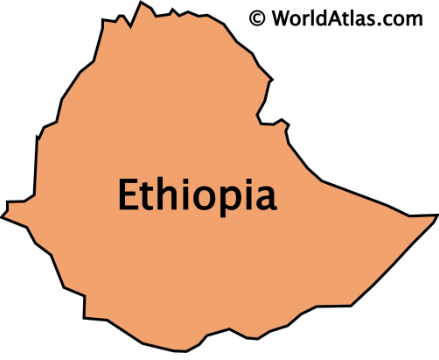Conflict In Ethiopia
By The Center of Research Training and Publication (CRTP)
Last Updated: April 23, 2024

- The conflict level for Ethiopia is 2.4 which shows that the nation conflicts are characterized by incidences of open disputes and violence with the increased intolerances by rival actors. Ethiopia indeed offers an interesting study of inter-state conflict where the state government are clashing with the national federal government. Ethnic federalism has taken the center stage of the conflicts in Ethiopia with boarder violence and incitement being the most prevalent conflict in the nation. The territorial disputes that have erupted in the recent past in Ethiopia has been the key issues often escalating to protracted political violence. The conflict between Ethiopia’s Tigray and Amhara regions reported on 20th of April 2024 has triggered mass displacement, with nearly 29,000 people fleeing and clashes erupting in the Raya Alamata district. While Amhara officials accuse Tigray forces of invasion, Tigray denies involvement, exacerbating tensions from unresolved issues stemming from a recent civil war, including contested areas and displaced Tigrayans. Urgent aid is needed for displaced families, while seven Western countries advocate for de-escalation. Meanwhile, Ethiopia reaffirms its commitment to a Memorandum of Understanding with Somaliland, despite objections, raising concerns about Ethiopian access to Somali ports. The death of Bate Urgessa, a prominent opposition figure, prompts calls for investigation, alongside Human Rights Watch’s reports of grave abuses in Merawi, underscoring the need for accountability and international intervention.
- The CMT-2024 also reveals a complex web of conflict drivers in Ethiopia, with political and economic marginalization, the proliferation of small arms, and the presence of multiple armed groups being among the most prominent factors that triggers conflicts in the nation. With regards to the actors, the CMT-2024 analysis highlights a diverse range of perceptions regarding the responsibility for ongoing conflicts in Ethiopia. Political leaders and armed militia groups are seen as most responsible, while government security forces, religious leaders, and community leaders also play significant roles in conflict dynamics in Ethiopia. On the perceptions regarding the effectiveness of different groups and institutions in resolving conflicts in Ethiopia, the CMT-2024 data reveals that the religious institutions, peace committees, and councils of elders are the most effective actors that have played a key role in promoting effective conflict resolution efforts in Ethiopia. Finally, the CMT-2024 data reveals a diverse range of perceptions regarding the challenges of resolving ongoing conflicts in Ethiopia. Lack of consensus among peace actors and corruption are seen as very challenging, while the reformed judicial system, political tensions, and historical grievances are perceived as moderately challenging.
Latest News
Escalating Conflict: Disputed Land Strife in Ethiopia’s Tigray and Amhara Regions
Ethiopia Navigating Controversy and Cooperation with Somaliland despite resistance from Mogadishu
Bate Urgessa, a prominent figure in the Ethiopian opposition Oromo Liberation Front (OLF), found shot dead near a road in his hometown of Meki, in the Oromia region
Ethiopian police have detained 13 suspects in connection with the killing of Bate Urgessa
Ethiopian federal forces and Fano militia clahes, resulting in scores of civilian deaths and extensive property damage.
